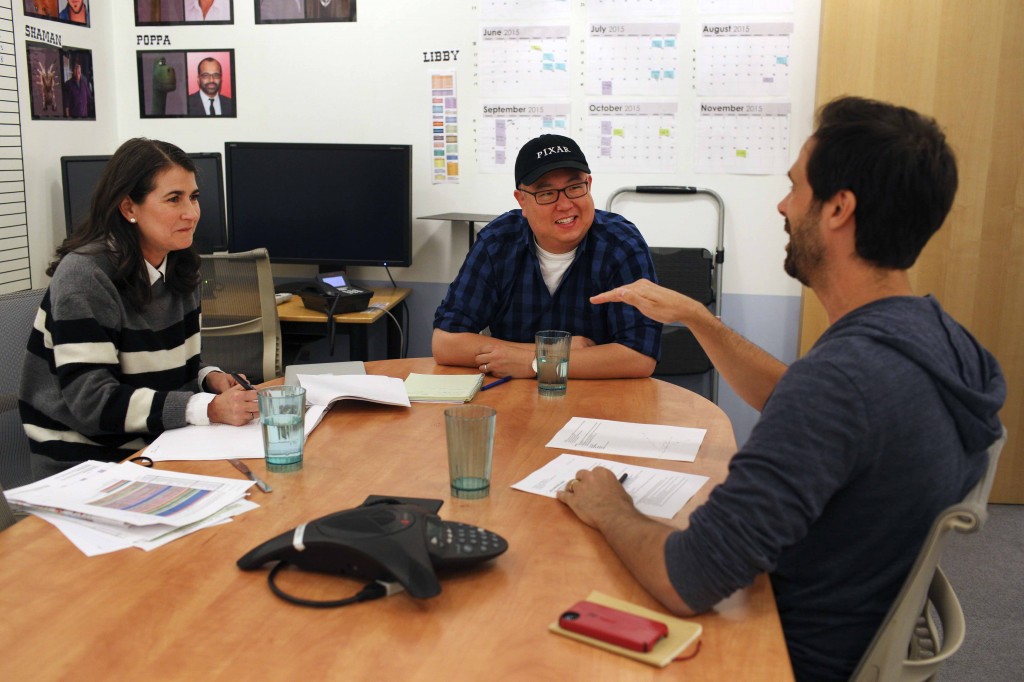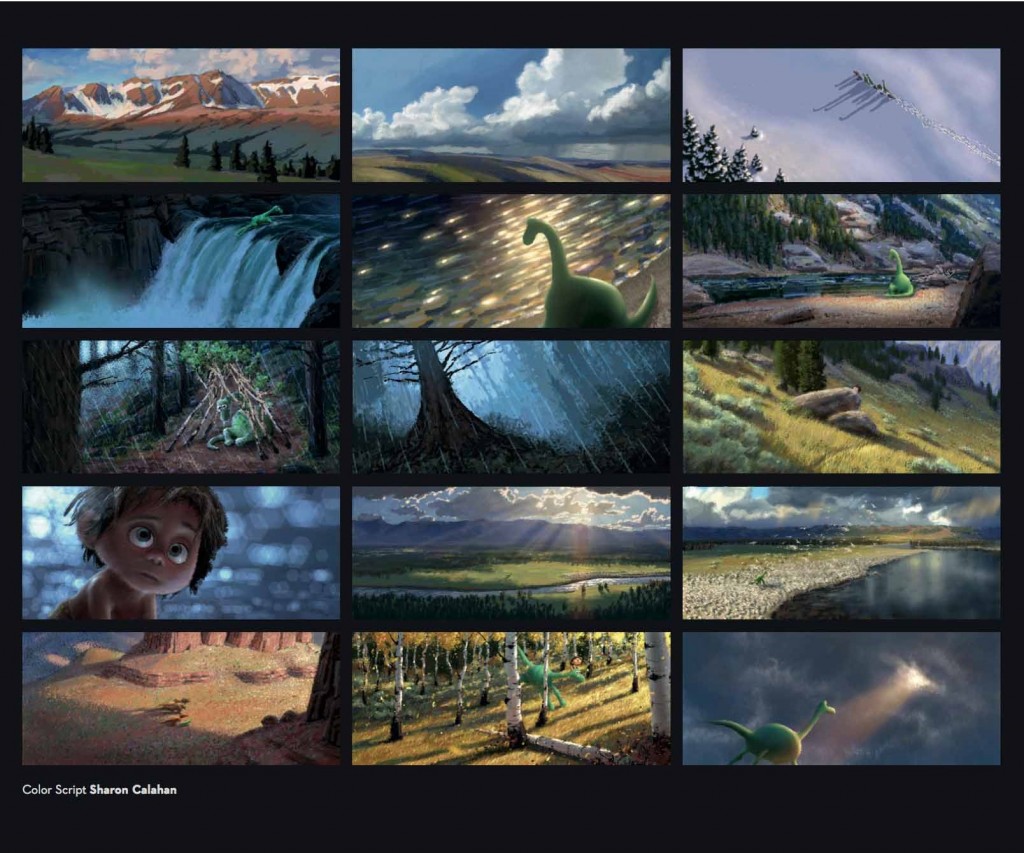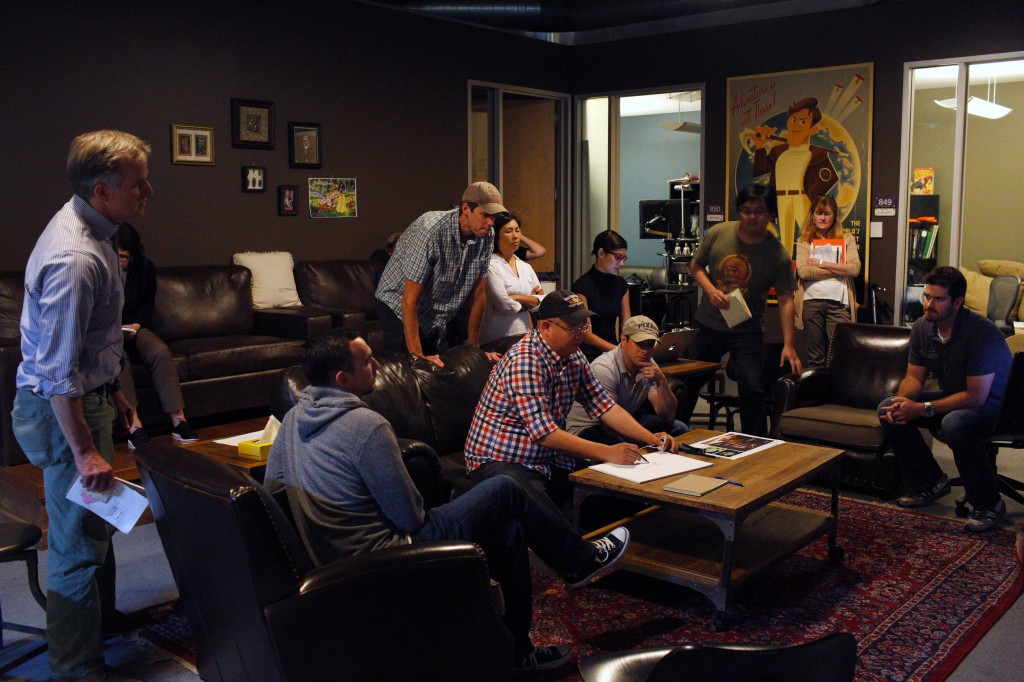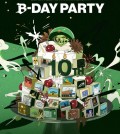- California Assembly OKs highest minimum wage in nation
- S. Korea unveils first graphic cigarette warnings
- US joins with South Korea, Japan in bid to deter North Korea
- LPGA golfer Chun In-gee finally back in action
- S. Korea won’t be top seed in final World Cup qualification round
- US men’s soccer misses 2nd straight Olympics
- US back on track in qualifying with 4-0 win over Guatemala
- High-intensity workout injuries spawn cottage industry
- CDC expands range of Zika mosquitoes into parts of Northeast
- Who knew? ‘The Walking Dead’ is helping families connect
Pixar’s secret sauce: Inside the writers’ room of ‘The Good Dinosaur’

Kelsey Mann is photographed at Pixar Animation Studios in Emeryville, Calif. (Photo by Deborah Coleman/Pixar)
By Brian Han
By now millions and millions of people have ridden the emotional roller coaster that is a Pixar film.
After 16 features, you would think that the studio probably has its secret formula all figured out. That it’s a simple matter of plugging in a few lovable characters, a story line with loss and redemption, then voila — the tears start shooting out of your face.
“Our job as writers is to make you guys feel something when you watch a movie,” story supervisor for “The Good Dinosaur” Kelsey Mann told the Korea Times inside Pixar’s very own story room. “Trust me when I say it’s a very hard thing to do.”
Okay then. We’ve established that it’s not that simple. But what goes into the process of writing a film — more specifically, what exactly is happening behind closed doors at Pixar headquarters?
“We found that the way to do it, is to bring ourselves and our experiences and put it up on the screen,” he said. “The way we do that is we get into the story room and just talk.”
Well, that seems easy enough.
“We get real in here,” he explained. “It’s all about like, ‘When I was 8, my parents got divorced, and I remember when they told me, and I remember how I felt.’ That kind of stuff is gold for when we’re making these types of movies.”
Basically, opening up old emotional wounds and sharing them in a professional environment to a dozen co-workers with whom you will be spending the next few years.
Not only that, a writer has to convince the rest of the room to feel the same emotions, to prompt them to think of times that they felt the same way.
It’s emotional. It’s complicated. It’s a typical day at Pixar.
What this type of approach essentially provides is authenticity. It may just be a movie, but something about the story convinces you that it’s real. That in some far off universe, talking dinosaurs exist and go through the same exact things we do.
It sounds odd, sure, but most viewers know the feeling.
“You can tell when filmmakers are being true and honest, and when they’re faking it,” Mann said. “It makes me so mad when you see a movie, and you know they’re faking it, and it feels all wrong.”
Luckily, Mann never felt that during the making of “The Good Dinosaur” or ever during his many years at the studio.
“What I love about everyone at Pixar, especially Pete [Sohn, director of "The Good Dinosaur"], is that they mean it,” he said. “If you ever meet Pete, you’ll know right off the bat that he’s such a genuine human being.”

During a day in the life of (center) Director Peter Sohn and “The Good Dinosaur” with (left) Producer Denise Ream and (right) Story Supervisor Kelsey Mann on June 2, 2015 at Pixar Animation Studios in Emeryville, Calif. (Photo by Deborah Coleman/Pixar)
But back to the process. To pump out so many successful films, the studio also needs to function like a well-oiled machine. In other words, there is a system in place.
“We make the movie over and over,” said “The Good Dinosaur” screenwriter Meg Lafauve. “We draw the whole movie, put sound, put scratch dialogue to it, put music to it, then we show it to 300 people in a big theater and get 300 sets of notes.”
“Then we go back to the beginning and start over and make the movie over and over and over.”
Despite the repeated process, the truth is that everything starts and ends with the story at Pixar. Nothing else happens until an idea is fully formed in the story room and Sohn gives it the green light.
“Once it feels right, and it feels amazing, and it gets approved, then, and only then, it goes to animation, then lighting, then rendering,” Mann said. “You don’t want to go through those expensive departments unless you know it’s going to work. That’s our job, to make sure it works.”
Lafauve and Mann pointed out that the way they work together in the “Bullpen” as they call it, isn’t much different than how movies were made during the early days at the studio.
Instead, the only thing that has really changed over the span of about 25 years is the technology.
The story room still has paper, pencils and markers strewn about, but when you first step inside, it’s more likely that visitors will draw their eyes toward the large Wacom tablets placed in front of each chair around a long table.
For those who don’t know, a Wacom tablet is pretty much a digital canvas that allows easy storage, transfer and presentation of work.
“The Good Dinosaur” marked the first time the team ever used this particular layout.
“I love drawing on paper, but we’re doing thousands of drawings when we’re story boarding so it’s a fantastic tool.”
That’s all it is though. A tool. The process always circles back to the stories and the emotions that come along with it.
“I always say it doesn’t matter how you get the idea,” Mann said. “I don’t care if you draw it on a canvas, a paper, a post-it, or digitally. As long as it’s a good idea and it comes from your heart, it will fit right in.”


















Pingback: What Kind Of Paper Is Used For Animation | Informantion
info
November 20, 2016 at 2:16 PM
Why is Japan such an unpopular tourist destination …
Lucky Patcher
October 16, 2017 at 11:35 PM
thanks for explaining so deeply. i got your point.